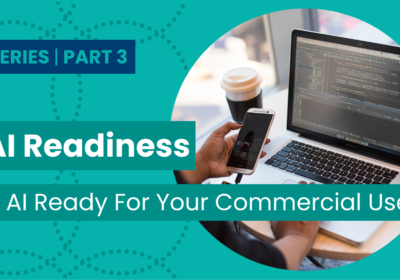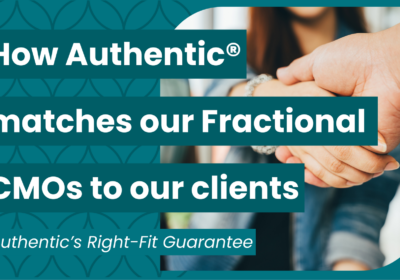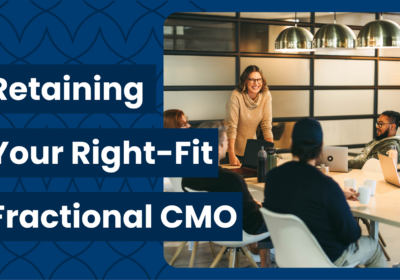
Most business leaders understand that marketing should help get more “at bats” through lead generation efforts, but many organizations miss the opportunity to engage marketing to its full potential.
Beyond lead generating programs, marketing can and should be instrumental in client retention, growth, loyalty, advocacy, as well as other business strategies in product or service innovation, employee recruitment / retention, change management communications, and more.
Welcome to this edition of Authentic’s “Virtual Panel” series: The many dimensions of Marketing. This Virtual Panel features a Q&A exchange with four of our Authentic Fractional CMOs™ who have experience in marketing leadership across a variety of businesses.
Here’s a quick virtual introduction to our panel of experts (subsequently referred to by first name in the conversation that follows):
Q1. Many growing businesses find it challenging to clearly define the concept of “marketing” for their organization, and subsequently struggle with hiring marketing talent and prioritizing their marketing budgets. Why is marketing so hard to define?
(Katie) Marketing is so hard to define because its core functions – Product, Price, Promotion, and Place – touch every aspect of how a business goes to market, and many of these functions are shared across the organization. Marketing is most effective when its first job is to care obsessively about customers and market insights and use that knowledge and care to drive really smart decisions and programs across the 4Ps. It’s a tall order and one that’s hard to hire for.
(Kris) The term “marketing” is quite broad and variable so some struggle with a straightforward definition.
But if you want to put it in a box, “marketing” is a strategy and a plan. You need to understand what makes a successful marketing strategy for your organization and how it affects your target market. When you understand this, you will have a plan in place and stop with the random acts of marketing.
Marketing is key to an organization’s success. At the end of the day, building business and growing revenue is the fundamental purpose of marketing.
(Greg) After working with small business owners for 15+ years, I think they believe marketing is both “easy and common sense.” They “know” what has worked in the past and they assume it will keep working. Unfortunately, this approach almost guarantees that they will miss how their market and customers have changed, which often results in flat sales and declining margins. And since margins are down, they don’t want to spend on marketing, so the downward cycle may continue.
(Kate) Marketing has always been and will always be about connecting with the right person, at the right time, in the right place to cause action. To do this marketers must help their organizations identify the needs of their customers and communicate how their product/service helps fulfill those needs – the brand promise.
This requires marketing leadership that creates strategies to drive tactics that lead to growth. Marketing tactics (e.g. social media, website, email, advertising) without strategy can make incremental gains, but growing businesses must make a conscious investment in marketing strategy and marketing leadership to continue to grow and thrive.
This is why I love the Fractional CMO model. Making an investment in marketing strategy and leadership can be achievable for all sizes of businesses and budgets with this model!
Q2: Years ago, the primary role of marketing was to build brand awareness, generally through traditional advertising and public relations. Today, marketing is responsible for bringing more quantifiable impact through qualified lead generation, and ultimately, revenue results. In your opinion, has the pendulum swung too far away from “brand” and too far toward “leads”?
(Greg) I believe that your brand is enhanced in every contact that a customer or prospect interacts with the business/brand. Remember, brands have always been trying to bring in new customers. Today, while the marketer’s toolset has changed, a brand is still built in a customer/prospect’s mind in every touchpoint they have with the brand.
This means that not only the traditional communication methods, but all online tools must reinforce the brand message. The same is also true when a customer/prospect interacts by phone, face to face, or any other way that they interact with the brand.
(Katie) Prospects have to know who you are and what you stand for in order to turn into any kind of lead. As long as our demand generation programs don’t lose sight of that, I think we’ll be okay.
(Kris) You can’t have one without the other and expect success. Brand awareness is necessary for lead generation to be effective, as it is hard to sell to organizations/people if they don’t know you exist in the first place.
There is no simple formula, but when used effectively they can complement each other. There are times when you need to focus on one more than the other. Doing both will allow you to target both ends of the sales funnel and reap the benefits with the common goal of generating action and acquiring customers.
(Kate) I love this definition of a Chief Marketing Officer (CMO) from the American Marketing Association: “In the future, the CMO needs to be the Sherlock Holmes of the C-suite—an intuitive customer behavior genius, a sociologist of sorts. Lose sight of your customers for even one minute and you’re in trouble.”
I believe the future is now. CMOs have all of the tools (and then some) to be the Sherlock Holmes of the C-suite. In my experience, as long as the focus remains on keeping customers and potential customers at the heart of all efforts, revenue follows. There needs to be a healthy balance between brand and generating leads. I believe that in the 20s we will see a swing back to brand. Consumers are overwhelmed by digital messages and will be looking for brands that align with their values.
Q3. How can a strong brand and customer experience influence revenue results?
(Kris) Marketing helps build brands through great experiences and great brands showcase who they are in the experiences they deliver.
Customer experience is critical for sustained growth of a business. It’s no longer about price or product. Customers stay loyal to businesses because of the experience they receive. Ensuring a positive customer experience helps build customer loyalty. Loyal customers are more apt to refer your business or be a reference. Loyalty helps business retain venue while also acquiring new customers.
(Katie) Brand is so much more than logos and slogans. Every interaction with a company contributes to people’s perception of a brand and how much they’re willing to pay for it or advocate for it as an end-user. By being really intentional about what you’re bringing to market, how you’re pricing it, how you’re delivering it, and how you’re talking about it, you can create a great “brand experience” that customers want to experience – as first-time buyers all the way through to long-term subscribers.
(Kate) Customer Experience is the sum of all interactions with a brand. This can include everything from a customer’s initial awareness or discovery of a company, product, or service and progressing through the purchase and use of those products or services. Together these all add up to the critical moments—the touchpoints—that create an overall customer experience. Customer experience defines the brand.
To be successful today, the promise a brand makes and communicates must match the customer experience. Customers will not accept anything less. There are too many choices and options available. So, to answer the question, a strong brand created by exceptional customer experience absolutely has positive revenue impacts.
Brands with exceptional experiences can charge price premium on products and services, have increased loyalty, experience a willingness to try new products and customers demonstrate openness with sharing information. Brands that are not paying attention to customer experience will fail.
(Greg) Happy customers both buy again and make recommendations. This is especially true if they like to post on review sites (like Yelp and others).
Q4. Besides marketing, how can other roles within the business help to support and build an organization’s brand (executive, sales, service / delivery, operations, finance, etc.)? What examples can you share of brand advocacy in action outside of the marketing team?
(Kate) Every employee in an organization has a responsibility to the brand. With the increased access to brands, customers also have more access to company employees and areas of the organization that may have been hidden in the past. As marketers and leaders, it is important to involve the entire organization in the brand.
Employee brand engagement is as important as customer brand engagement. One of the best examples I have seen is how L.L. Bean engaged employees ahead of a national campaign focused on helping people spend more of their time at work outdoors – research shows that spending time outside while working makes us more productive, more creative and happier. L.L. Bean created the world’s first-ever outdoor co-working space at their headquarters. The experience allowed L.L. Bean employees to live the promise the brand was made by engaging and building pride. The experience was so successful that L.L. Bean has their outdoor co-working space still today and “Be an outsider at work” has become a movement the brand owns.
(Katie) Mayo Clinic is one of my favorite brand experiences. After my husband received disjointed and confusing care from a hospital and several medical groups in the Twin Cities, we went to Mayo. From the museum in the lobby that told the Mayo story, to the neurologist who treated us like partners in Mike’s care, to the surgeon who gave us a few affirming minutes to tell us why surgery wasn’t necessary, we felt listened to, respected, and in amazing hands. Most of us aren’t actual neurosurgeons talking about literal brain surgery – the stakes are much lower. We can still tie our origin stories to the way we care for our customers today and make sure we have they systems and culture in place to deliver on our promise and aspiration.
(Kris) Employees are your most important brand asset. If employees aren’t aligned with your brand, then your business cannot align with your customers. Brands need to be created from the inside out.
Employees are brand ambassadors through the products they create, services they deliver and the interactions with customers and prospects.
I have seen a lot of employees engage with social media. Whether sharing a company video or a written piece about a success. Employees are happy to share positive aspects of their work. When employees talk about their organization, people listen.
(Greg) As I mentioned above, every interaction a customer has with the brand impacts their perception of the brand. Customer service response to problems can go a long way to help make customers happy even when they are disappointed in their latest interaction.
A recent example for me was when Terminix billed me $25 when I had paid for the full year in advance. Their customer service called and asked me to pay the invoice, and I explained that I paid in advance. I was told they would check on this. Later they called me and said they had removed the invoice and apologized for the error. That simple follow up phone call keeps the brand higher in my mind.







